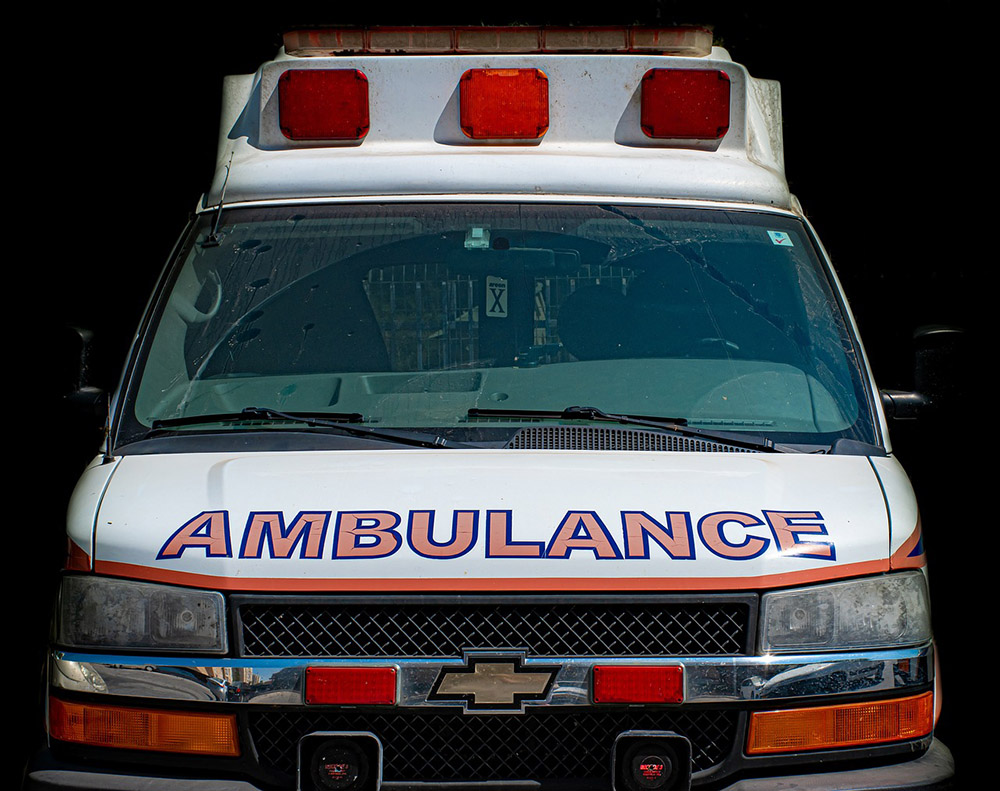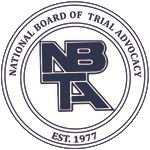
Ambulance accidents can be the most severe motor vehicle accidents on the road here in Lexington, KY. They might not only endanger the lives of the patient or paramedics riding inside of the ambulance but also motorists traveling alongside these emergency vehicles.
Who is responsible for these crashes? Fault can be challenging to determine in these situations. However, our personal injury attorneys at Golden Law Office can aim to help you sort out liability issues stemming from a Kentucky ambulance accident throughout the remainder of this article.
How Likely Are You to Encounter Emergency Responders?
Who is responsible when someone is injured in an ambulance accident? Is it the paramedic operating the ambulance or the driver of the other vehicle?
Kentucky ambulance accidents can be complex, and determining fault can be difficult. However, there is an etiquette when driving around emergency vehicles that every driver should already know. To attend to emergencies quickly and efficiently, police officers, ambulance drivers, or any other emergency vehicle must operate on clear roadways.
In some situations, they’ll be coming up behind you; in others, they’ll be barreling toward you and cross over a double yellow line or even a grass median because their lane is too clogged. When red and blue lights and sirens appear around you, you may need to act fast—especially if you’re driving at a high rate of speed.
If you’re unsure of what to do when you see or hear an emergency vehicle in Lexington, it’s simple: pull over. Unfortunately, drivers who choose to keep going are not only being inconsiderate but also taking away possible routes for the first responders. Plus, if they get into an accident, it will just create another obstacle for the already busy emergency personnel.
How Common Are Ambulance Accidents?
In 2020, 180 people died in crashes involving emergency vehicles, according to the National Safety Council. Most of these deaths were linked to non-emergency cars, approximately 56%, and fatalities among pedestrians amounted to 25%. Fortunately, emergency vehicle drivers represented a lower number (11%), and their passengers only accounted for 5%. While it may seem like these were separate vehicle accidents, these were mainly multi-vehicle crashes.
As we mentioned earlier, it’s natural to feel panic when you see flashing lights and hear sirens in your rearview mirror. But it’s also crucial that you stay calm, assess the situation, and decide what to do based on the safety of everyone around you—including yourself. Unfortunately, a recent study highlighted that ambulances operating without lights or sirens were less likely to be involved in crashes.
A recent study published by the National Institutes for Health (NIH) addressed the association between warning lights and sirens and accidents. The study’s authors highlighted how there’s an increased risk of ambulance crashes when these emergency vehicles operate with lights and sirens.
Crash rates are significantly higher when an ambulance uses lights and sirens in general responses and during transport. Without using lights and sirens, the crash rate is 4.6 per 100,000 responses. However, that figure jumps to 5.5 when emergency responders do use them. The risk becomes even greater when paramedics are transporting a patient; without emergency lights or sirens, the crash rate is 7.0 per 100,000 transports but increases to 16.5 crashes during transport.
Common Causes of Ambulance Accidents
Ambulance drivers are under a lot of strain to transport patients as quickly and safely as possible. Unfortunately, this frequently implies that the driver must maneuver through heavy traffic and congested intersections, utilizing their flashing lights and sirens to warn other automobiles and pedestrians.
If the ambulance driver takes unnecessary risks, it endangers not only passengers in the emergency vehicle but also that of other motorists. If an accident that causes serious injuries results from the emergency driver’s negligence, the medical transport driver would be liable for those injuries. One example of this is if an ambulance driver neglects to turn on their sirens or flashing lights.
However, there are scenarios in which another driver (other than the ambulance one) is responsible for accidents due to their:
- Distracted driving
- Unnecessary speeding
- Drowsy driving
- Failure to yield to other vehicles in an intersection
The emergency driver and other motorists aren’t the only ones at risk of driver negligence. The patient transported in the ambulance is also at risk if the driver fails to take proper safety precautions. EMS personnel can also be held liable for their negligence toward their passengers if they fail to:
- Secure the patient’s gurney
- Secure the gurney to the vehicle’s emergency straps
- Secure equipment inside the ambulance, which would cause further injuries
Rules for Emergency Vehicles: Who Is Responsible?
Although a crash caused by an ambulance driver isn’t medical malpractice, it is still considered a motor vehicle accident. Therefore, determining who is at fault for the Lexington, KY crash is necessary.
There can be difficulties in holding an emergency vehicle liable for causing a car crash due to the existence of the doctrine of sovereign immunity. Sovereign immunity typically stops citizens from suing the government if they are hurt. However, not all ambulances are operated by government agencies, and even if they were, higher Kentucky courts have ruled that this doctrine doesn’t shield local governments from liability in scenarios like these. Even if they agree it does, there may be special forums within which plaintiffs can pursue legal action in such cases. This is a situation where it can be helpful to have an experienced car accident attorney like one of ours at Golden Law Office help you navigate your rights in your Lexington case.
Emergency vehicles may travel at high speeds and execute specific actions to reach their destination as soon as possible, but they must still adhere to safety regulations. For example, drivers can only break local traffic laws if they are on their way to a dispatched emergency, and it is safe to do so.
If an emergency vehicle disobeys a law without proper justification and causes an accident, its employer may face liability for any damage or injuries it caused. Drivers cannot assume other cars will yield the right of way.
Common Injuries in Ambulance Accidents
Some alarming safety reports show that nearly one-third of ambulance accidents result in injuries. This is likely because emergency vehicles are larger and heavier than the average car, which can cause more damage in a collision. You might believe the ambulance protects people from harm, but this isn’t always the case.
Common ambulance injuries are:
- Burns
- Paralysis
- Internal injuries
- Traumatic brain injuries
- Broken bones
- Whiplash and spinal injuries
Why a Personal Injury Lawyer Is an Asset in Ambulance Accidents
If you’re involved in a vehicle accident, assume it’s no different from any other automobile accident and seek medical treatment as soon as possible. Then, exchange and collect the driver’s badge, the car’s ID number, and employment information. Gather as much information about the crash as possible.
You should also take pictures of the damage to all vehicles, the scene of the accident, and your injuries. You’ll also want to track all your medical and other damage expenses, as all of this will be necessary to make your case to insurance companies involved.
Even if you follow these critical procedures, many emergency vehicle accident claims do not follow the same course as automobile accidents. This isn’t a statement claiming that all emergency vehicles are at fault for accidents; another motorist is just as capable of being at fault. However, if Lexington, KY emergency personnel are at fault, their employers will likely be held accountable.
Many people in these situations are unsure if they require legal counsel regarding their injuries. The answer is almost always yes. Why? Because insurers aim to pay car accident victims as little as possible or nothing at all on their claims. If you’ve been hurt in an accident caused by an emergency vehicle or a negligent party involved in an ambulance accident, a personal injury lawyer from Golden Law Office can help you.
Our car accident attorneys will work with experts to build your case necessary to prove negligence so you can obtain the compensation you deserve. Don’t be the victim left with the burden of medical bills and other damages when someone else is at fault. Instead, get an attorney at our Lexington law firm to fight for what’s rightfully yours. Contact us today to schedule your free initial consultation.





